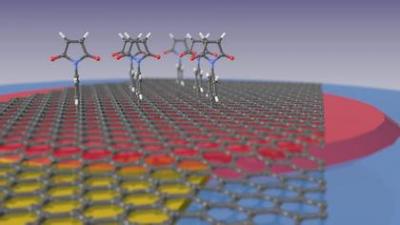A team of scientists from the HZB Institute for Silicon Photovoltaics in Germany managed to increase the selectivity of graphene to various molecules in order to make more efficient sensors. The scientists were successful in electrochemically activating graphene and preparing it to host molecules that act as selective binding sites.

For this task, para-maleimidophenyl groups from an organic solution were grafted to the surface of the graphene. These organic molecules act as mounting brackets to which the selective detector molecules can be attached in the next step of the process. The attched graphene can then be employed for detecting various substances with a precise matching mechanism, similar to a "lock and key" paradigm. The "lock" molecules on the surface are highly selective and only absorb the matching "key" molecules.
The team at HZB produced graphene surfaces several square centimeters in size so that edge effects play as minimal role as possible in the processes. Then, the scientists transferred the graphene layer to a quartz crystal microbalance. Any increase in mass alters the oscillatory frequency of the quartz crystal that even small amounts can be measured. They were able to accurately detect how many molecules actually were grafted to the surface of the graphene and precisely control how many molecules bind to the graphene by adjusting an applied voltage.
The scientists state their high hopes for the use of graphene for sensing applications. For example, one thing thatthey imagine would be a really inexpensive "lab-on-a-chip" - by applying a single drop of blood one could immediately obtain data for important medical diagnostics.

